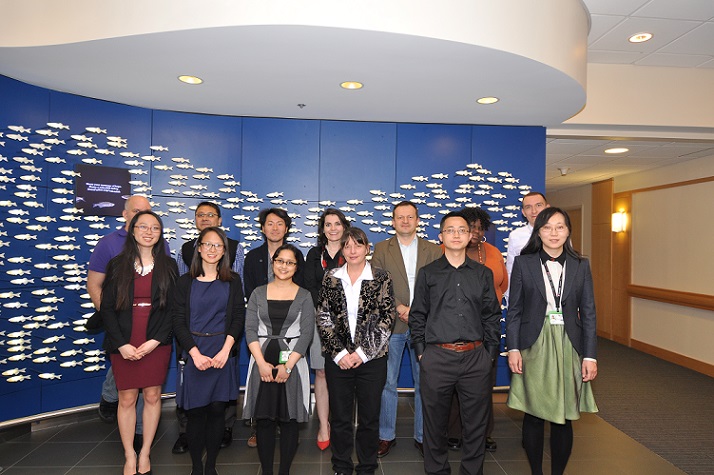Breast Cancer
Uncovering the Epigenetic Origins of Basal-like Breast Cancer



Posted October 19, 2016
Kornelia Polyak, M.D., Ph.D., Dana-Farber Cancer Institute, Boston, Massachusetts
Breast cancer is heterogeneous and consists of multiple subtypes, each with its own clinical challenges. The three major subgroups are classified as ER+, HER2+, and triple-negative breast cancer (TNBC) based on the expression of the estrogen, progesterone, and HER2 receptors. Based on differentiation and epigenetic states, breast cancers may also be classified as luminal or basal-like. ER+ and HER2+ tumors typically have luminal features, while TNBCs are commonly basal-like and generally have worse clinical outcomes. Learning what distinguishes these various subtypes of breast cancer is a critical area of research that will ultimately allow researchers to discover and attack the unique vulnerabilities of each subtype. Much of the research to date on the different types of breast cancer has focused on genetic differences - variations in the DNA itself. While this has provided important information, it tells only part of the story. Small changes in the proteins that the DNA coils around, or the addition of small molecules to DNA, can effectively silence individual genes; these so-called epigenetic changes can have major implications for how a cell behaves and functions.

Kornelia Polyak, M.D., Ph.D. (Front row, third person from the right)
Dana-Farber Cancer Institute
Dana-Farber Cancer Institute
Dr. Kornelia Polyak of the Dana-Farber Cancer Institute, recipient of an FY08 BCRP Idea Award and subsequent FY13 Idea Expansion Award, has made an important discovery regarding the origin of basal-like breast cancers. Dr. Polyak discovered that luminal and basal-like breast cancers are largely regulated by epigenetic mechanisms involving key factors that play a role in "switching" one type to the other.
As reported in a recently published article in Cell Reports, Dr. Polyak and her team used an advanced technique called somatic cell fusion to genetically merge luminal and basal-like breast cancer cells, and they observed the cellular and molecular changes that occurred as a result of the fusion through genetic and epigenetic profiling. They determined that epigenetic changes can drive luminal breast cancer cells to "switch" into basal-like cells, and that the basal-like cell type appears to be dominant. This is consistent with previous observations that luminal breast cancer tumors often contain individual cells with basal-like characteristics, while the reverse is rarely true. Moreover, Dr. Polyak and her team found that there are many different ways for cells to epigenetically extinguish the features of luminal breast cancer, suggesting that, even within the basal-like subtype, there is a high degree of variability. They found that basal-like breast cancer cells have an overall lower level of DNA methylation than luminal cells, and typically luminal cells use DNA methylation to silence stem/basal cell markers.
The results of Dr. Polyak's team represent a major advancement in the breast cancer field, providing new mechanistic information about the role of epigenetic factors in the development and biology of basal-like breast tumors. Ultimately, these findings may lead to new therapeutic approaches for patients with TNBC, one of the deadliest forms of breast cancer for which there are no targeted therapies available.
Publication:
Su Y, Subedee A, Bloushtain-Qimron N, Savova N, Krzystanek M, Li L, Marusyk A, Tabassum DP, Zak A, Flacker MJ, Li M, Lin JJ, Sukumar S, Suzuki H, Long H, Szallasi Z, Gimelbrant A, Maruyama R, and Polyak K. 2015. Somatic cell fusions reveal extensive heterogeneity in basal-like breast cancer. Cell Rep. 11(10):1549-1563.
Links:
Public and Technical Abstracts: Molecular Determinants of Breast Tumor Subtypes
Public and Technical Abstracts: Epigenetic Subtypes of Triple-Negative Breast Cancer
Last updated Thursday, December 5, 2024














